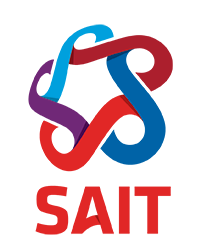CPNT 260
Assignment 4 - Full-page Layout
Weight: 10%
Due:
Late Penalty: 10% deduction for each day late. Submissions will not be accepted more than three days late.
In this assignment, you will be creating a full-page layout of a web page!
Content topic
The goal of this assignment is to create an internal page of a traditional website, such as a:
- Blog post;
- Contact page;
- About page;
- a 404 Page Not found page;
- etc.
To create this page you will:
- Choose a site title, owner, concept for your site;
- Choose a list of four (or more) your primary navigation menu;
- You do not have to create content for any other pages;
- Link to
#or choose an external site of your choice.
- Populate the main area of the page with (well-formed and accessible) content of your choice;
- Add a footer with copyright info at the bottom of the page;
- Make it funny/pretty/useful!
Instructions
- Create a
index.htmlpage with the following semantic elements:<header>- Site banner<nav>- Primary navigation<main>- Page content<footer>- Copyright information
- Use valid HTML and CSS;
- New: CSS must be linked externally in an
./css/[style|main|etc].css;
- New: CSS must be linked externally in an
- Design a full page layout of a site’s web page according to the requirements listed below.
Marking Rubric
Each of the following requirements will be worth 2 points for a total of 10 points.
1. Horizontal Flexbox navigation
Build a horizontal primary navigation menu that:
- contains at least four navigation links (link
hrefmay be#); - includes a logo and/or site name;
- is accessible (see below);
- uses colour and the box model to make links obviously and easily clickable;
- highlights the current page by displaying the link differently than the others;
- uses a
<ul>as a flex container and<li>as items; - justify the links to fit your design.
2. Content and Techniques
Build a page of valid HTML (W3C HTML Validator) page content and with a footer:
- Page content:
- Content that matches the theme of your page (you may use content from openly licensed sources, previous assignments or sample code given in);
- Use a diverse mix of elements and techniques learned in this course.
- Incorporate content and techniques not taught in this course.
- Footer:
- Copyright year with
©HTML entity; - Site owner;
- Copyright year with
3. Responsiveness and Accessibility
Your content should be responsive and accessible to screen readers:
- Use a media query to either display the navigation vertically or replace the navigation with a menu toggle;
Plus these:
- All navigation should be wrapped in a
<nav>element;<nav>can be nested inside a<header>
- The page has a
<title>in the<head>; - Main page content is wrapped in a
<main>container; - Footer content is wrapped in a
<footer>container at the bottom of the page; - The page content is a readable size and not touch the edge of any boundary (such as a background colour change).
- Line length should not exceed 40 characters on wide screens;
- No horizontal scroll bars should be visible at any device screen width;
- On mobile, content should be at least
1remaway from the edge of the screen; - Text should have at least a AA contrast ratio rating for its size;
4. Above and Beyond
Show off your coding skills by using ONE (use of more than one does not guarantee more marks) of the following:
- add a social navigation menu in the footer, OR;
- incorporate an inline SVG image for your company logo, OR;
- Google Map in the footer.
Provide a clear indication of which option you’ve chosen in your README (see below):
- Which did you choose?
- What file(s) and line number(s) can it be found?
5. Documentation and Code Quality
In addition to the standard requirements, include the following in your README.md:
- A helpful resource that helped you with this assignment;
- the search term you would use to find this resource again.
Plus these:
- Include a
README.mdat the root of your project that contains the following information:- Course title;
- Assignment name;
- Author name;
- GH Pages site
- Attributions for code and/or assets you used that are not your own.
- Use best practices with file/directory names and indentation:
- 2 spaces per indent
- Nested HTML elements and CSS declarations should be indented
- See: Files and Directories - Naming Conventions
- 2 spaces per indent
- CSS declarations should be organized by category (box model, fonts, borders, flex, etc), separated by a space and commented.
Submission Requirements
- Push this assignment to a GitHub repo named
cpnt260-a3and enable GitHub Pages; - ZIP all files required for the site to operate and submit to Brightspace;
- Include the following as a comment in your Brightspace submission:
- GH repo
- GH Pages site
